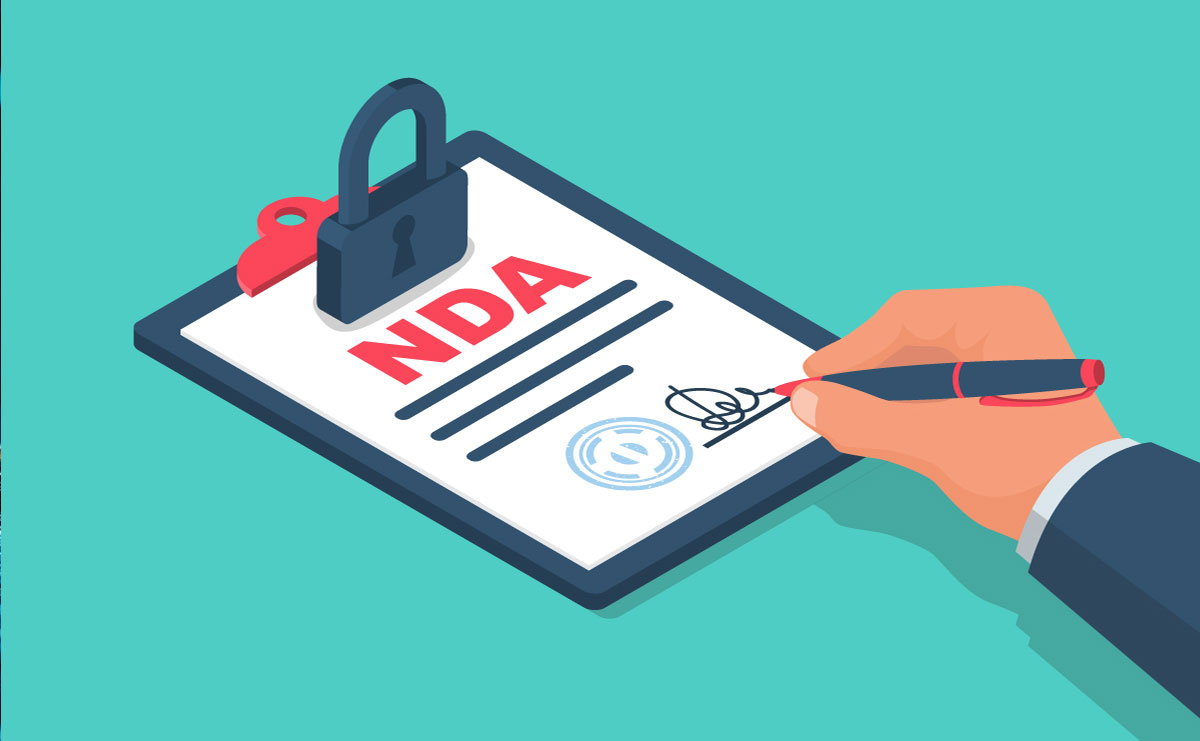Contents
Employment offers are formal invitations from an employer to a candidate who has successfully completed the interview process, indicating that they are selected for a position within the company. This offer is usually presented through an employment offer letter, which outlines the specifics of the job including duties, compensation, benefits, and other terms of employment. This document serves as a preliminary agreement between the employer and the candidate, setting the foundation for their working relationship. It is important for candidates to review this official offer carefully and understand all its aspects before accepting, it to ensure it aligns with their expectations and career goals.
What is an Employment Offer?
An employment offer is a formal proposal extended by an employer to a prospective employee to work at their organization under specific terms and conditions. It marks the culmination of the recruitment process, signifying that the employer has identified the candidate as being suitably qualified and a good fit for the organization’s culture and needs. The offer typically outlines critical aspects of the employment relationship, including job responsibilities, compensation, benefits, work environment, and the expectations of both parties.
This document serves as the foundation of the employment relationship, providing a clear structure for professional engagement. It ensures that both the employer and the prospective employee have a mutual understanding of what is expected in terms of roles, responsibilities, compensation, and other employment conditions. The formal nature of an employment offer also provides legal grounding for the terms of employment, which can be referenced in the event of any disputes or discrepancies regarding the employment terms initially agreed upon.
Receiving an employment offer is an important step for the candidate, as it allows them to review the terms carefully, consider the alignment with their career goals and personal circumstances, and negotiate any terms if necessary, before accepting the position. This document is typically provided in writing, either as a physical letter or an electronic document, and requires a formal acceptance to be returned by the candidate, thus initiating the start of the employment relationship.
Is an Offer Letter Legally Binding?
Offer letters can be legally binding, the extent to which they are enforceable as a contract depends on its content, the legal context, and the specific circumstances of its issuance and acceptance. Both employers and prospective employees should treat the offer letter seriously and consider legal advice if unsure about its implications.
Key Aspects to Consider
- Clarity and Specificity
An offer letter that clearly outlines the terms of employment, such as salary, job responsibilities, and other employment conditions, can create binding obligations for both parties. The more specific and detailed the letter, the more likely it is to be seen as a binding agreement.
- Intent and Content
If the offer letter is intended to be a formal job offer that the candidate accepts, it generally forms a basic employment contract. The acceptance of the offer creates a contract based on the terms stated in the letter. However, if the letter is vague or lacks essential terms of employment, it might not be considered a complete contract.
- At-Will Employment
In jurisdictions with at-will employment laws, such as many states in the USA, either the employer or the employee can terminate the employment at any time and for any reason (other than for illegal reasons). Even if the offer letter is considered a contract, the at-will nature means the terms can be changed or employment terminated without notice.
- Conditional Terms
Some offer letters include conditions that must be met, such as passing a background check, obtaining a work visa, or other pre-employment screenings. If these conditions are not fulfilled, the offer can be legally rescinded.
- Disclaimers
Employers often include disclaimers stating that the offer letter is not an employment contract, which can influence the binding nature of the document. These disclaimers typically specify that employment is at-will.
- State and Local Laws
Local laws greatly influence the enforceability of offer letters. For example, some states may require more explicit contracts or have different standards for what constitutes a binding employment agreement.
- Litigation History
Courts have sometimes found that promises made in offer letters can be enforceable, especially if the employee relied on these promises to their detriment (such as relocating for the job).
Essential Elements to Include in Every Employment Offer Letter
An employment offer letter is a critical document that formally communicates a job offer to a candidate and provides key details about the position and terms of employment. Here are essential elements to include in every employment offer letter:
Job Title and Description: The job title should accurately reflect the nature and level of the work to be performed. It should align with industry standards and the internal hierarchy of the company to avoid any confusion about the role’s seniority or scope. An accurate job title helps set expectations and can also impact the employee’s perception of their professional identity. The job description serves as a brief overview of the key responsibilities and duties the candidate will be expected to perform. This section should be concise yet detailed enough to give the candidate a clear understanding of what their day-to-day work will entail. Avoid inflating the responsibilities or promising roles and tasks that are not central to the position. Transparency at this stage helps prevent misunderstandings and sets the stage for a trusting employee-employer relationship.
Start Date: Clearly stating the proposed start date helps align expectations and allows the candidate to make necessary arrangements. It is important to be specific about the date, including the day of the week, to avoid any confusion. For instance, rather than saying “in two weeks,” it’s more helpful to state “Monday, May 20, 2024.” If there is flexibility with the start date, it should be clearly communicated in the offer letter. This can be particularly important for candidates who may be relocating, finishing educational programs, or transitioning from another job where they need to provide notice. Once the start date is agreed upon, it is good practice to confirm it in writing. This confirmation can be part of the final employment contract or a follow-up communication, ensuring both parties are on the same page.
Reporting Structure: Indicate who the new employee will report to. This helps set expectations regarding the supervision and support structure within the organization. Providing clear information about whom the new hire will report to helps in setting expectations and preparing them for their new role. Knowing your reporting lines will help you navigate our organization and understand the resources available to you. It ensures you know who to approach for guidance, feedback, or assistance with your projects. By carefully addressing the reporting structure in the employment offer letter, companies can ensure that new hires feel informed and prepared, fostering a smoother integration into the team and organization.
Salary and Benefits: Begin by specifying the salary amount clearly and unambiguously. This should include whether the salary is quoted as an annual figure, hourly rate, or in another form, depending on the nature of the job. Outline the compensation package, including the salary amount, payment schedule (e.g., bi-weekly, monthly), and any bonuses or incentives that are part of the offer. A well-crafted salary section not only clarifies the pay structure but also highlights additional financial incentives that can make the offer more attractive. Briefly mention how the salary package integrates with other benefits offered, such as retirement contributions or health insurance. This presents the compensation as part of a broader employment package, which can be more appealing. Ensure the language used is straightforward and all terms are explained clearly to avoid any misunderstandings. If there are complex compensation structures involving stock options, equity, or deferred compensation, consider providing a brief explanation or offering a separate detailed document.
Work Schedule: Detail the expected working hours, any flexibility in the schedule, and whether the position is remote, in-office, or hybrid.
Employment Type: Clarify whether the position is full-time, part-time, temporary, or contract. This helps define the nature of the employment relationship. Detail what the employment type implies regarding job security, benefits, and work expectations. For example:
- Full-Time: “As a full-time employee, you will be eligible for the full range of benefits offered by the company, including health insurance, paid time off, and retirement benefits.”
- Part-Time: “Please note that as a part-time employee, you will be eligible for pro-rated benefits based on the number of hours you work.”
- Temporary: “This position does not include eligibility for the standard benefits package offered to permanent employees.”
- Contract: “As a contractor, you will not be eligible for company-provided benefits such as health insurance or paid time off.”
Probationary Period: If applicable, mention any probationary period during which the terms of employment might differ from those of regular employment.
Confidentiality Agreement: By addressing the requirement for a confidentiality agreement directly and clearly in the offer letter, employers can reinforce the significance of confidentiality in the role and ensure legal protections are set in place before the employee begins their duties. This also builds a foundation of trust and compliance from the start of the employment relationship.
Clearly stating the requirement to sign a confidentiality agreement (CA) or non-disclosure agreement (NDA) sets legal and ethical expectations upfront. Explain the purpose of the CA or NDA, emphasizing its importance in protecting the company’s proprietary information and maintaining trust with clients and stakeholders. Outline the scope of what the confidentiality agreement covers. This may include data protection, client information, company strategies, software processes, and other intellectual properties. Also, clarify the duration for which the confidentiality agreement will be in effect, including any terms that extend beyond the termination of employment. Mention the legal implications of signing the agreement, highlighting the responsibility to uphold the terms and the potential consequences of breach.
At-Will Employment: If applicable, clarify that the employment is at-will (i.e., either party can terminate the employment at any time with or without cause or notice) unless it is contractually stated otherwise.
Legal and Policy Acknowledgements: Note any legal or compliance policies that the employee must agree to follow, such as data protection regulations or industry-specific compliance requirements.
Conditions of Employment: This section ensures that all necessary conditions are met, maintaining the company’s compliance with legal standards and ensuring the reliability and safety of its workforce. Include any conditions that must be met before the start of employment, such as background checks, drug tests, proof of eligibility to work, educational qualifications, professional licenses, or certifications. This careful detailing helps mitigate risks and aligns expectations, facilitating a smooth transition to employment.
Deadline for Acceptance: It establishes a specific timeframe within which the candidate must respond to the job offer, ensuring that the hiring process stays on schedule and that both parties can plan accordingly. Specify a clear and reasonable deadline for the candidate to accept or decline the offer. The duration of this deadline can vary depending on the level of the position and the urgency of the hiring needs but typically ranges from one week to two weeks.
Contact Information: Provide contact details for a person at the organization who can answer any questions about the offer or employment terms.
Including these elements ensures that the offer letter is comprehensive and clear and sets the foundation for a transparent and professional employment relationship.
What Happens Once a Candidate Receives an Employment Offer?
Receiving a job offer marks a significant milestone in a candidate’s career journey but it is just the beginning of a series of important steps that solidify the transition into a new role. This phase is crucial not only for the candidate who needs to make informed decisions about their future but also for the employer who must effectively integrate the new hire into their organization. This guide outlines the typical sequence of events that unfold once a job offer is extended, from the initial review and negotiation of the offer to the final preparations for the candidate’s first day. Understanding these steps can help both parties navigate the process smoothly, ensuring a successful start to the employment relationship.
Reviewing the Offer: When a candidate receives an employment offer, one of the first and most critical steps they must take is to thoroughly review the offer. This review process is vital as it ensures that the candidate fully understands all the aspects of the offer before moving forward. The candidate carefully reviews the terms outlined in the offer letter, including job title, salary, benefits, and start date.
Clarification and Negotiation: If there are aspects of the offer that the candidate wishes to discuss or negotiate, such as salary or start dates, this is the time to address those concerns with the employer.
Acceptance or Rejection: Once any negotiations are finalized, the candidate formally accepts or declines the offer. Acceptance is usually done in writing to confirm the agreement on terms.
Pre-employment Conditions: If the offer is contingent upon certain conditions, such as passing a background check, drug test, or completing certain pre-employment assessments, the candidate must fulfill these requirements.
Onboarding Preparation: Upon acceptance, the employer typically begins the onboarding process. This may involve setting up IT accounts, scheduling orientation sessions, and preparing workspace and resources.
Official Documentation: The candidate may receive additional documents to sign, such as an employment contract, confidentiality agreements, or tax forms.
Resignation from Current Role: If the candidate is currently employed elsewhere, they will need to give notice and potentially negotiate an exit or transition plan with their current employer.
Transition: As the start date approaches, the candidate prepares for their new role, which might include transitioning current work responsibilities, moving to a new location, or other personal adjustments.
First Day: The candidate starts their new job, often beginning with an orientation or training program to better understand the company, its culture, and their specific role.
This sequence ensures that both the candidate and the employer are clear about the expectations and responsibilities, setting the stage for a successful professional relationship.
Employment Letter versus Offer Letter
Understanding the differences between an employment letter and an offer letter is essential in the context of hiring and employment processes. Each document serves distinct purposes and is used at different stages in the employment cycle.
- Offer Letter
An offer letter is typically the first formal document a candidate receives after successfully navigating the interview process. This letter outlines the preliminary terms of employment and is essentially a proposal from the employer to the candidate. Here are the key aspects of an offer letter:
- Purpose: To formally offer a job position to a candidate and outline the initial terms of employment.
- Contents: The offer letter usually includes the job title, start date, salary, benefits, work location, and any conditions that need to be met before the employment begins (such as background checks or drug tests). It may also mention the at-will nature of the employment (if applicable).
- Flexibility: It often provides details on whether the terms are negotiable and encourages the candidate to discuss any concerns or questions they might have about the offer.
- Non-binding: Generally, offer letters are not legally binding contracts but are understood as an invitation to enter into an employment agreement. The candidate can negotiate or even decline the offer.
- Employment Letter
An employment letter, often referred to as an employment contract or agreement, is a more formal and comprehensive document that is typically issued after the offer is accepted. It serves as a binding agreement between the employer and the employee. Key aspects include:
- Purpose: To establish a formal, legal relationship between the employer and the employee, detailing the duties and responsibilities of both parties.
- Contents: This document includes all details found in an offer letter but goes further to comprehensively outline job responsibilities, the term of employment (if not indefinite), confidentiality agreements, non-compete clauses (if any), termination conditions, dispute resolution mechanisms, and other legal provisions.
- Binding Nature: Unlike the offer letter, an employment letter is a legally binding document. Both parties are expected to adhere to its terms, and breaches can lead to legal consequences.
- Formality: The employment letter is more formal and typically longer than an offer letter. It is often drafted with legal input to ensure compliance with labor laws and company policies.
Generally, an offer letter is used to confirm the selection of a candidate and to begin the final negotiation phase of employment terms. On the other hand, an employment letter is used to finalize the employment agreement and start the professional relationship under clearly defined legal terms. Understanding these differences helps both employers and employees navigate the hiring process effectively, ensuring clear communication and proper legal standing in forming employment relationships.
Conclusion
In conclusion, an employment offer is a pivotal document that lays the groundwork for a new professional relationship between an employer and a candidate. It marks a crucial transition from the recruitment process to actual employment, signifying mutual agreement on the terms of engagement. This document not only formalizes the job offer but also provides a clear outline of the job responsibilities, compensation, benefits, and other critical terms that define the working relationship. It is imperative for candidates to meticulously review and understand every aspect of the offer letter, as this document forms the basis of their employment conditions and can significantly impact their professional lives. Accepting an employment offer is not merely about starting a new job; it is about entering into a commitment that should align with the candidate’s career aspirations, personal values, and long-term goals. Thus, understanding and negotiating the terms of an employment offer are essential steps in ensuring that this new beginning is as promising and fulfilling as possible.
Frequently Asked Questions
1.Can you negotiate the terms of an employment offer letter?
Absolutely, negotiating an employment offer letter is not only possible but also frequently expected. Negotiations are essential for aligning the employment terms with the needs and expectations of both the candidate and the employer. Candidates may advocate for a higher salary based on their qualifications, previous experience, or standard rates within the industry or region. Additionally, negotiating benefits such as health insurance, retirement contributions, paid time off, and flexible work arrangements is common. Candidates might seek improvements or modifications to these benefits to suit their personal situations better.
If candidates have prior commitments or need time to relocate, they may also negotiate a later start date. Job specifics sometimes require further clarification or adjustment, and candidates can discuss these elements to ensure the role aligns well with their professional skills and career objectives. For roles that necessitate relocation, candidates might negotiate support for related expenses, such as moving costs or temporary housing. These negotiations not only tailor the job offer to the candidate’s needs but also demonstrate their proactive engagement in shaping their professional path.
2.Who can access an employment contract?
Access to an employment contract is usually limited to a specific set of individuals to maintain confidentiality and protect privacy. Both the employee and the employer, as the main parties involved, have immediate access; the employee is provided a copy upon signing, while the employer keeps one for record-keeping. Human Resources (HR) staff commonly oversee these contracts to address issues related to employment terms, benefits, and compliance with employment laws. Legal experts might review the contract during disputes, negotiations, or when clarification of terms is needed. Additionally, external auditors or government regulatory agencies may require access to employment contracts to verify adherence to financial, tax, or labor standards. Other management personnel may also need to review these documents for operational or administrative needs. Any access beyond these parties generally necessitates consent from either the employer or the employee, depending on the circumstances and relevant privacy regulations.
Disclaimer: The content provided on this blog is for informational purposes only and does not constitute legal, financial, or professional advice.







